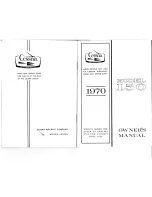Hobbico Awarf Series, Manual
The Hobbico Awarf Series offers a comprehensive range of high-quality remote-controlled products. With our user-friendly manual available for free download on manualshive.com, you'll have all the information you need to get started and unleash the full potential of your Awarf product. Enjoy an exciting RC experience with ease!

















